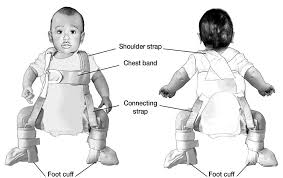- Home
- Medical news & Guidelines
- Anesthesiology
- Cardiology and CTVS
- Critical Care
- Dentistry
- Dermatology
- Diabetes and Endocrinology
- ENT
- Gastroenterology
- Medicine
- Nephrology
- Neurology
- Obstretics-Gynaecology
- Oncology
- Ophthalmology
- Orthopaedics
- Pediatrics-Neonatology
- Psychiatry
- Pulmonology
- Radiology
- Surgery
- Urology
- Laboratory Medicine
- Diet
- Nursing
- Paramedical
- Physiotherapy
- Health news
- Fact Check
- Bone Health Fact Check
- Brain Health Fact Check
- Cancer Related Fact Check
- Child Care Fact Check
- Dental and oral health fact check
- Diabetes and metabolic health fact check
- Diet and Nutrition Fact Check
- Eye and ENT Care Fact Check
- Fitness fact check
- Gut health fact check
- Heart health fact check
- Kidney health fact check
- Medical education fact check
- Men's health fact check
- Respiratory fact check
- Skin and hair care fact check
- Vaccine and Immunization fact check
- Women's health fact check
- AYUSH
- State News
- Andaman and Nicobar Islands
- Andhra Pradesh
- Arunachal Pradesh
- Assam
- Bihar
- Chandigarh
- Chattisgarh
- Dadra and Nagar Haveli
- Daman and Diu
- Delhi
- Goa
- Gujarat
- Haryana
- Himachal Pradesh
- Jammu & Kashmir
- Jharkhand
- Karnataka
- Kerala
- Ladakh
- Lakshadweep
- Madhya Pradesh
- Maharashtra
- Manipur
- Meghalaya
- Mizoram
- Nagaland
- Odisha
- Puducherry
- Punjab
- Rajasthan
- Sikkim
- Tamil Nadu
- Telangana
- Tripura
- Uttar Pradesh
- Uttrakhand
- West Bengal
- Medical Education
- Industry
Pavlik Harness treatment may help accelerate development of acetabulum in patients less than 6 months old

Yong Liu et al conducted a study to investigate the impact of failed Pavlik harness (PH) treatment on the outcomes following closed reduction (CR) or open reduction (OR) in developmental dysplasia of the hip (DDH). They found that PH treatment, even if failed, may have the ability of accelerating the development of the acetabulum and increasing the rate of successful CR. Thus the authors advocate a trial of PH treatment for all DDH patients less than 6 months of age.
The primary goal of the treatment in DDH is to achieve a stable and concentric reduction as early as possible so as to facilitate normal development of all structures of the hip while avoiding complications. Failure of PH treatment and late-diagnosed DDH are still commonly encountered. Usually, in these patients, a closed or open reduction is considered for further treatment.
Ninety-three DDH patients treated with CR or OR were enrolled. One group of which received previous PH treatment (F group) and the other (L group) not. The clinical outcomes were evaluated according to McKay's criteria. Radiographs were evaluated for acetabular index (AI) and the degree of dislocation of the hips.
A higher rate of CR was found in F group (P=0.034). Before CR/OR, the mean AI in F group was significantly lower than that in L group (P=0.000), while at the last follow-up, the AIs in both groups were all improved. In F group, there were 7 (16.67%), 18 (42.86%) and 17 (40.48%) hips were classified as Graf type II, III and IV pathologic changes, respectively, when PH treatment started, while the corresponding data were 17 (40.48%), 17 (40.48%) and 8 (19.05%) after PH treatment (P=0.024). At the last follow-up, no significant difference was found concerning the complications between the two groups (P > 0.05).
The authors concluded that - both CR and OR yielded favorable clinical and radiographic outcomes in selected DDH patients. Moreover, even if it failed, PH treatment may have the ability of accelerating the development of the acetabulum and increasing the rate of successful CR. Thus we advocate a trial of PH treatment for all DDH patients less than 6 months of age. Meanwhile, a close monitoring by ultrasonographic examination is required due to the risk of AVN.
Further reading:
Impact of Failed Pavlik Harness Treatment on the Outcomes Following Closed or Open Reduction in Developmental Dysplasia of the Hip, Yong Liu, Lisheng Kan et al, Indian Journal of Orthopaedics (2022) 56:1634–1639 https://doi.org/10.1007/s43465-022-00680-x
MBBS, Dip. Ortho, DNB ortho, MNAMS
Dr Supreeth D R (MBBS, Dip. Ortho, DNB ortho, MNAMS) is a practicing orthopedician with interest in medical research and publishing articles. He completed MBBS from mysore medical college, dip ortho from Trivandrum medical college and sec. DNB from Manipal Hospital, Bengaluru. He has expirence of 7years in the field of orthopedics. He has presented scientific papers & posters in various state, national and international conferences. His interest in writing articles lead the way to join medical dialogues. He can be contacted at editorial@medicaldialogues.in.
Dr Kamal Kant Kohli-MBBS, DTCD- a chest specialist with more than 30 years of practice and a flair for writing clinical articles, Dr Kamal Kant Kohli joined Medical Dialogues as a Chief Editor of Medical News. Besides writing articles, as an editor, he proofreads and verifies all the medical content published on Medical Dialogues including those coming from journals, studies,medical conferences,guidelines etc. Email: drkohli@medicaldialogues.in. Contact no. 011-43720751


